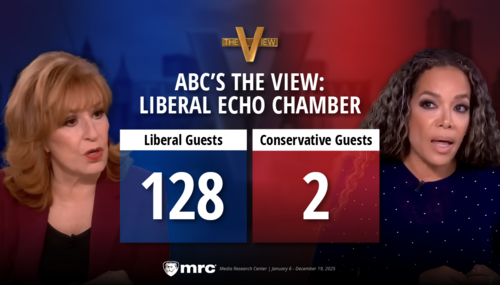 New York Times reporter Emma Fitzsimmons took the paper’s hostility toward the massively popular Uber ride-sharing program down to a personal level, blaming it for suicides of taxi drivers, in Wednesday’s “With Uber on Duty, Cabdrivers Confront A Desperate Future.”
New York Times reporter Emma Fitzsimmons took the paper’s hostility toward the massively popular Uber ride-sharing program down to a personal level, blaming it for suicides of taxi drivers, in Wednesday’s “With Uber on Duty, Cabdrivers Confront A Desperate Future.”
The online headline: “A Taxi Driver Took His Own Life. His Family Blames Uber’s Influence -- A series of suicides in New York has drawn attention to the economic desperation of drivers competing with ride-hailing apps.”
She told the tragic story of Nicanor Ochisor.
Immigrants from Romania, the couple had bought their New York City taxi medallion nearly three decades ago. Lately, it had been difficult to find fares. Her husband worked 12-hour shifts, but brought home less money. He was worried about the plunging value of their once-lucrative medallion and frustrated about Uber’s takeover of the industry.
On a cold day in March, Mr. Ochisor hanged himself in his garage in Queens. His family blames the growing hopelessness he felt over his fortunes as a taxi driver.
....
Suicide is a deeply intimate decision, and there is no way to know for certain what confluence of factors might lead someone to make such a choice. But the recent series of deaths has drawn attention to the economic desperation that many taxi and livery drivers are grappling with, and has renewed calls to rein in Uber and other ride-hailing services.
Now, “something had to be done” to curb freedom of transportation. Throughout the piece, Fitzsimmons steadfastly ignored how the taxi industry has brought a lot of its woes on itself through expensive, unreliable, often rude service, leaving it vulnerable to competition.
After Mayor Bill de Blasio suffered a bruising political defeat when he tried -- unsuccessfully -- to cap Uber in 2015, there has been a growing sense that something has to be done. In a first step, the City Council held a hearing on Monday for several bills that could change the rules for car service apps.
Fitzsimmons acknowledged the transformational aspect of Uber, but downplayed the vital money and convenience factor that has led it to be embraced by urban liberals. Do New York Times reporters truly never use Uber or Lyft to get around Manhattan or more far-flung NYC environs? What about poorer NYC residents who don’t live in expensive, more public-transport friendly Manhattan?
Uber has transformed how Americans get around and has upended the transportation network in community after community. In New York City -- Uber’s largest United States market -- the app has siphoned commuters from the sputtering subway and bus system, but more significantly it has all but vanquished the iconic yellow cab, plunging it into an existential crisis.
How many urban residents truly pine for the days when yellow cabs were the only means of automotive transport?
In 2015, Uber launched an aggressive campaign against the city’s proposed cap, with television advertisements criticizing Mr. de Blasio, and an app feature, known as “de Blasio view,” that showed long wait times for a ride if the cap were approved. But this time Uber might be a less formidable foe. The company has struggled with a series of scandals over its workplace culture and aggressive tactics, leading to the resignation of its chief executive and founder last year.
Scandals eagerly pushed by the Times.
Finally, at the very end, readers got an anecdote from the real world hinting why Uber was able to find a fan base in the sprawling city.
Still, it is easy to see how Uber has found a foothold in New York City. The Ochisor family lives in the Maspeth neighborhood of Queens, far from the nearest subway line. A reporter visiting the home asked for advice about the quickest way back to Manhattan.
Gabriel Ochisor had to admit that the best option was Uber.




